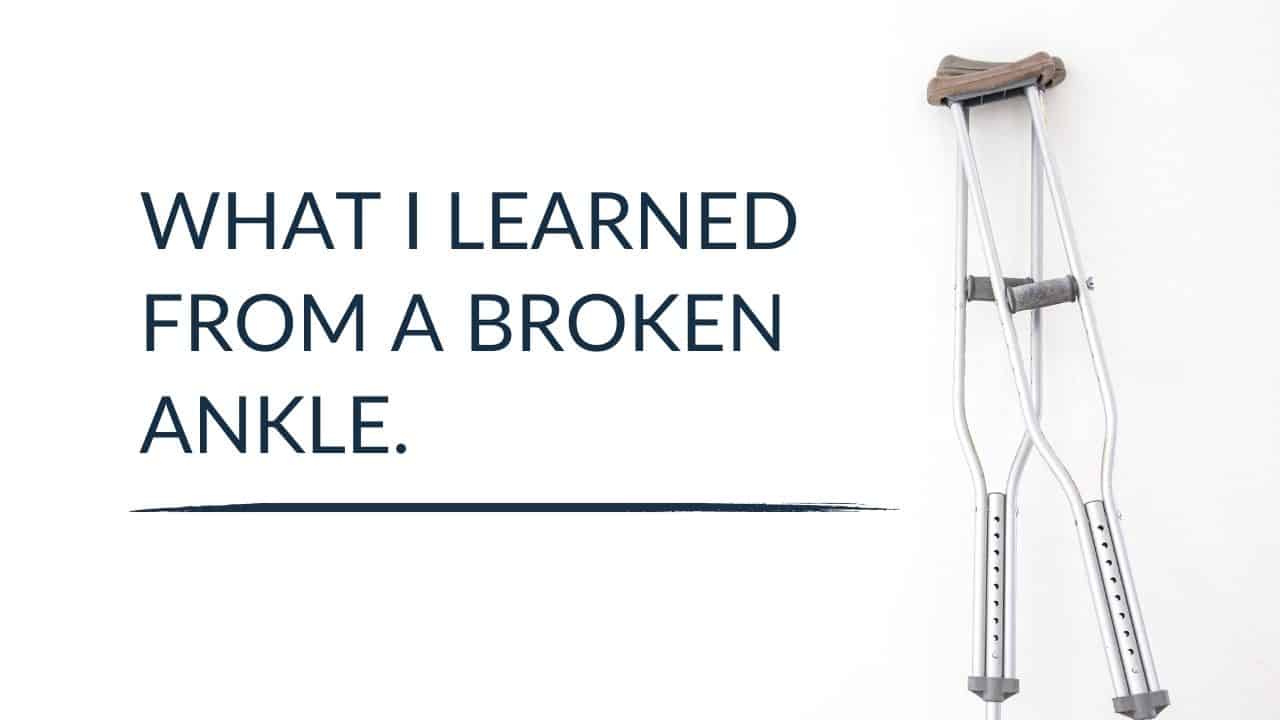Does Your Team Have A Hero Or A Martyr?

This year on Valentine’s Day I broke my ankle. Better than a broken heart, I suppose?
What does that have to do with team performance you may ask? Well, for the past six weeks I’ve been hobbling around with a walking boot cast, crutches, and my trusty knee scooter. And I’ve needed help – a lot of it. Help to shower, help to grab something downstairs that I forgot, help to drive places when it was too hard to get in and out of the car alone. My family and friends stepped up to help and support me, which they did willingly, or most of the time, at least.

Experiencing all of this has made me think a lot about my team development work and how loss and vulnerability affect team performance.
How Do Unanticipated Setbacks Affect Team Performance?
Whether it’s losing a valuable team member unexpectedly (to illness or resignation), failing to meet team goals or KPIs, or an inability to agree on next steps, true teams are often formed when these moments of storming or when difficulties unexpectedly arise.
In my team assessment experience, I see three common behaviors when teams hit a setback:
- One person steps up as the hero: Here, one member steps forward and takes on way more than their share of the work, softening the burden on the other team members. Potentially, any team member could do this, yet more often than not, it’s the team leader seeking to protect their team from increased disturbances. However, if someone other than the team leader steps up, I find that this can often lead to a team martyr and breeds additional resentment on the team.
- The team lets the void stand: If a culture of “this isn’t my problem to handle” exists, bottlenecks and delays are the results. I tend to see this in highly siloed environments or when the void can only be filled by a true subject matter expert. Here’s an example: Recently my EA had a water issue that needed city approval to fix. The person who could give that approval was on vacation for 2 weeks and no one else could approve this permit, leaving her family waterless for over 2 weeks!
- The team rallies together and divides the work: This is the mark of high-functioning and collaborative teams, yet this solution is rare. This solution is more common when there’s a short-term illness or medical leave and a team wants to all pitch in to support their injured team member, knowing things will return to “normal” as soon as that teammate returns. What’s harder is how to navigate situations where there will be a longer-term hole, or worse, an indefinite one. As a result of the Great Resignation and “supply chain issues” in the job market, I see more and more teams in this situation.
Three Strategies for Guiding Overwhelmed Teams Through Change
- Acknowledge the Reality: Whether you are the team leader, or falling into the role of hero or victim, the most important first step is to name the pressures that are overtaking you and/or the whole team. Often team members don’t want to look weak, less capable, or like a complainer so they continue to soldier on in silence. What I’ve seen is that when the problem is named and visible to everyone, first there is a sigh of relief throughout the team for everyone that “it’s not just me!” Then the real brainstorming and necessary prioritizing can begin. And if it doesn’t, then you have the opportunity through the conversation to assess whether it’s denial on leadership’s part (a good fact to know), or a more situational issue just for you, where you can then begin to discuss what resources (whether it’s extra help or extra skills to acquire) would make a meaningful difference to you.
- Set a Meaningful Limit: Many of us have heard the phrase “it expands to fill the time you allot for it.” While only a rule of thumb, it’s often at play, and when team members respond to increased workloads by overworking, the path eventually leads to burnout. When setbacks occur, add limits rather than expectations. Good places to start are no-meeting days, a shut-down time for working (whether you’re done or not), and planned sprints followed by rest to allow teams to narrow their focus to accomplish more. Having group agreement about limits and priorities is necessary for team performance and can lead to more aligned leaps forward together.
- Give Up The Ghosts: Often there’s an unseen force, whether it’s the inner critic in our head, a previous leader who insisted there was no room for mistakes, or a never-questioned team norm (for example, responsiveness to every IM, Slack, and email.) We often carry stories in our heads, and on our team about what success looks like and feel we can’t settle for anything less. These expectations were likely highly effective when they were created but now they place undue strain for minimally better results. The truth is that teams now have very different working conditions than two years ago. Work is evolving fast and teams (and their leaders) need to evolve similarly.
One tip to help you give up the ghosts: If you are holding fast to ideas about what you “should” be doing and what executive presence looks like, keep a notepad by your desk for a few days and note every single “should” that pops up for you as you do your work. At the end of a few days, look at the patterns and see if you can throw just ONE category of “shoulds” to the side for two weeks. Put a reminder on your calendar and two weeks later, assess how much you missed it. It’s amazing how many chains weigh us down and undermine, rather than contribute to team success.
I’m curious to know when events happen that threaten to hinder team performance, have you tried any of these strategies to guide teams through change? If you were to try a new one now, which one do YOU think would be more helpful? Are you willing to give it a “go?” Drop a comment below, I would love to hear from you.